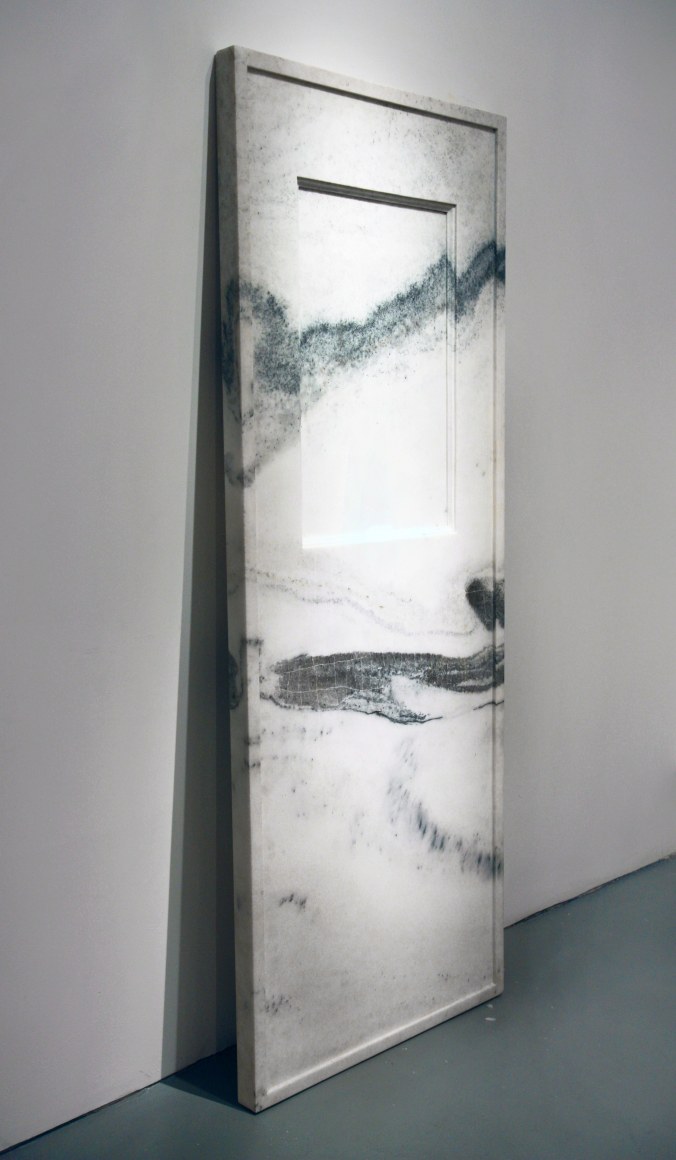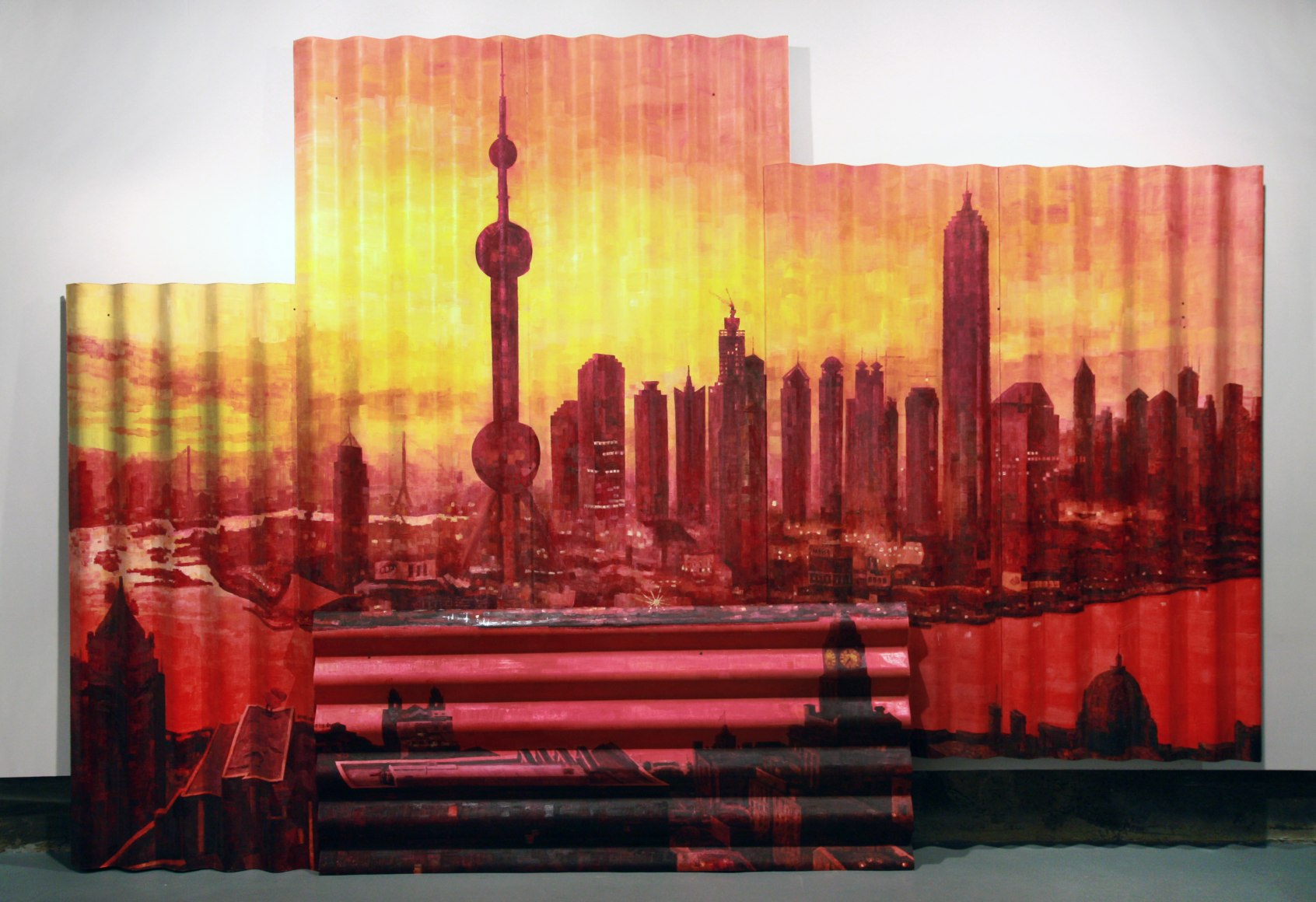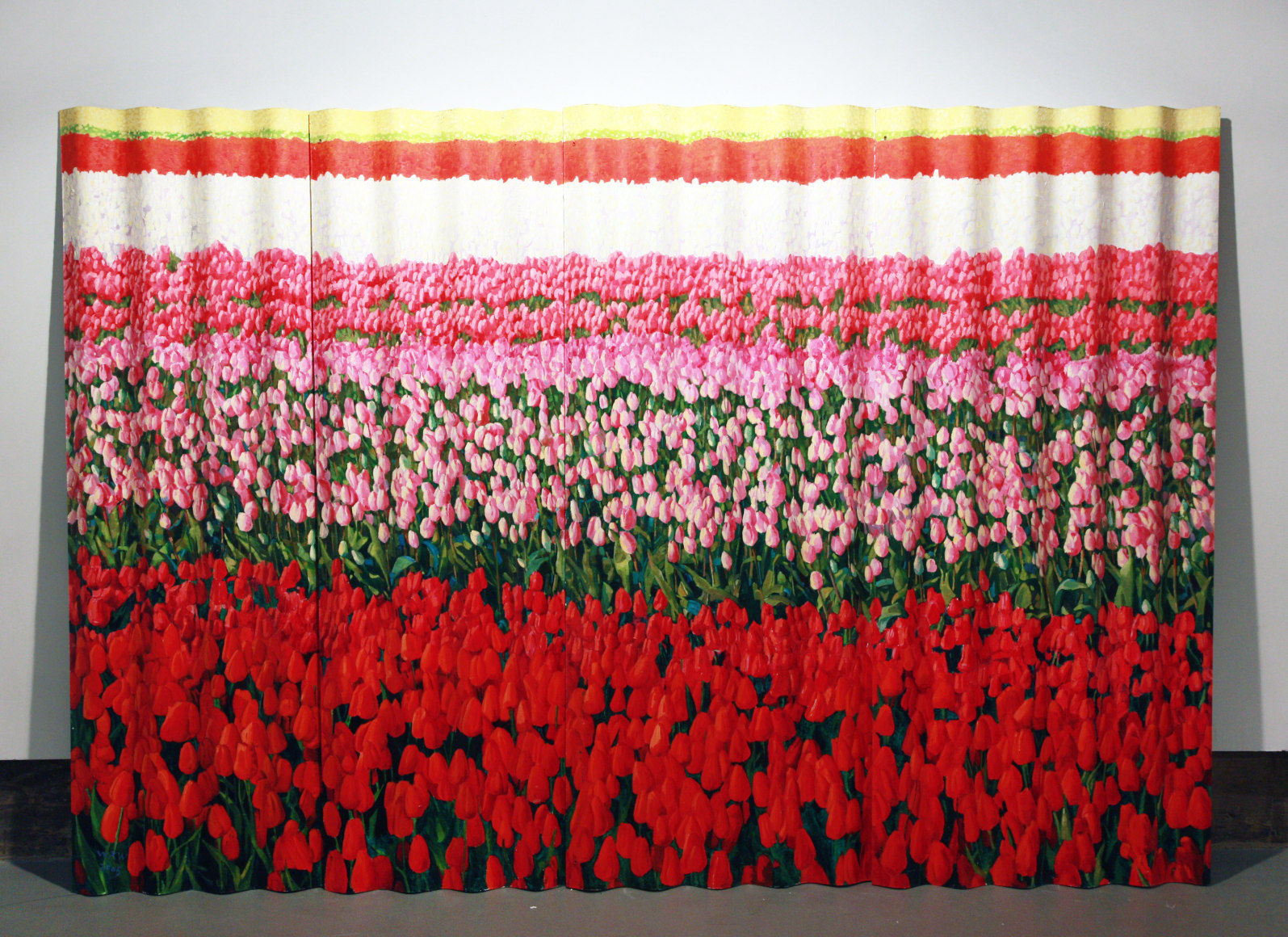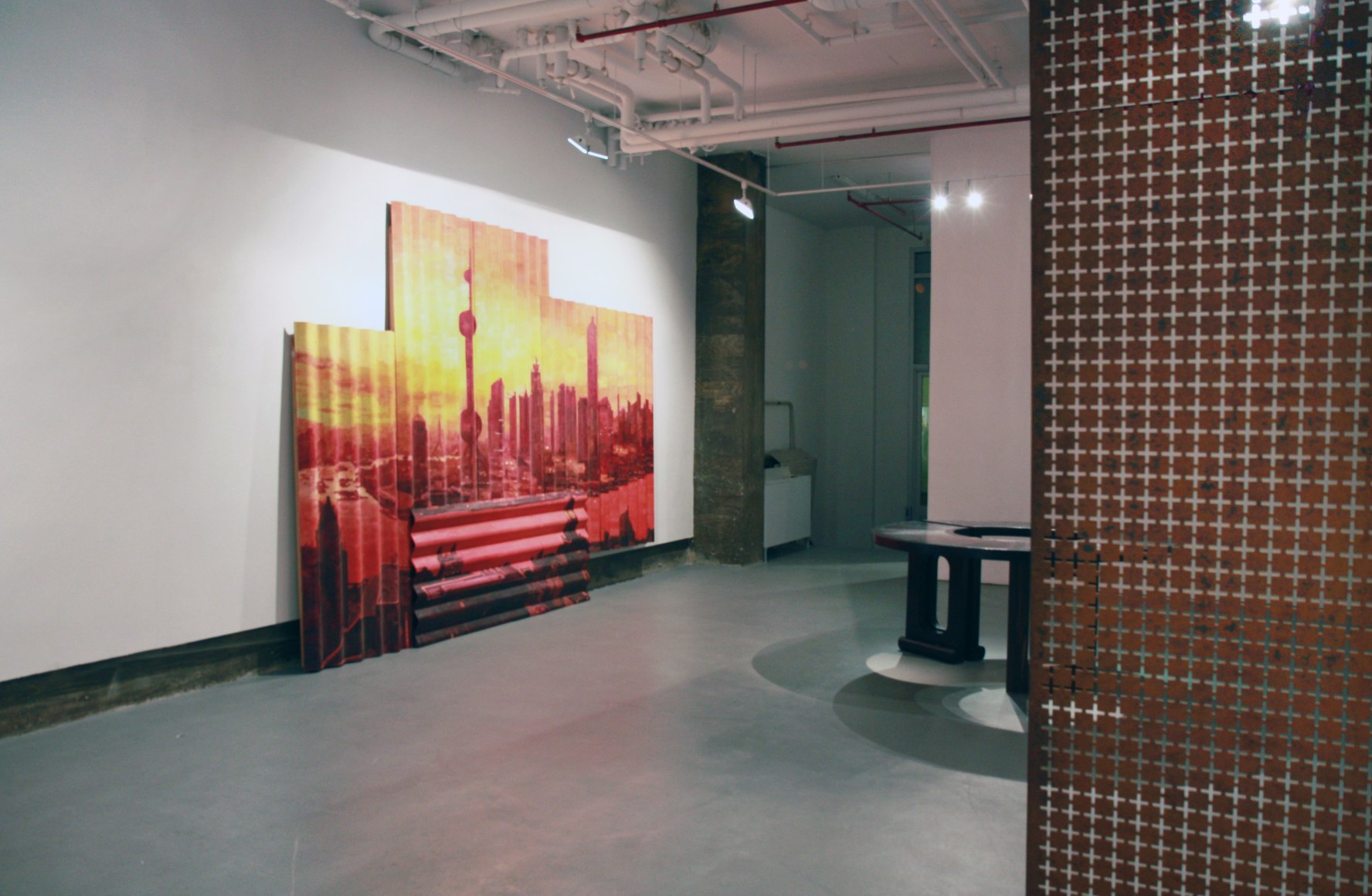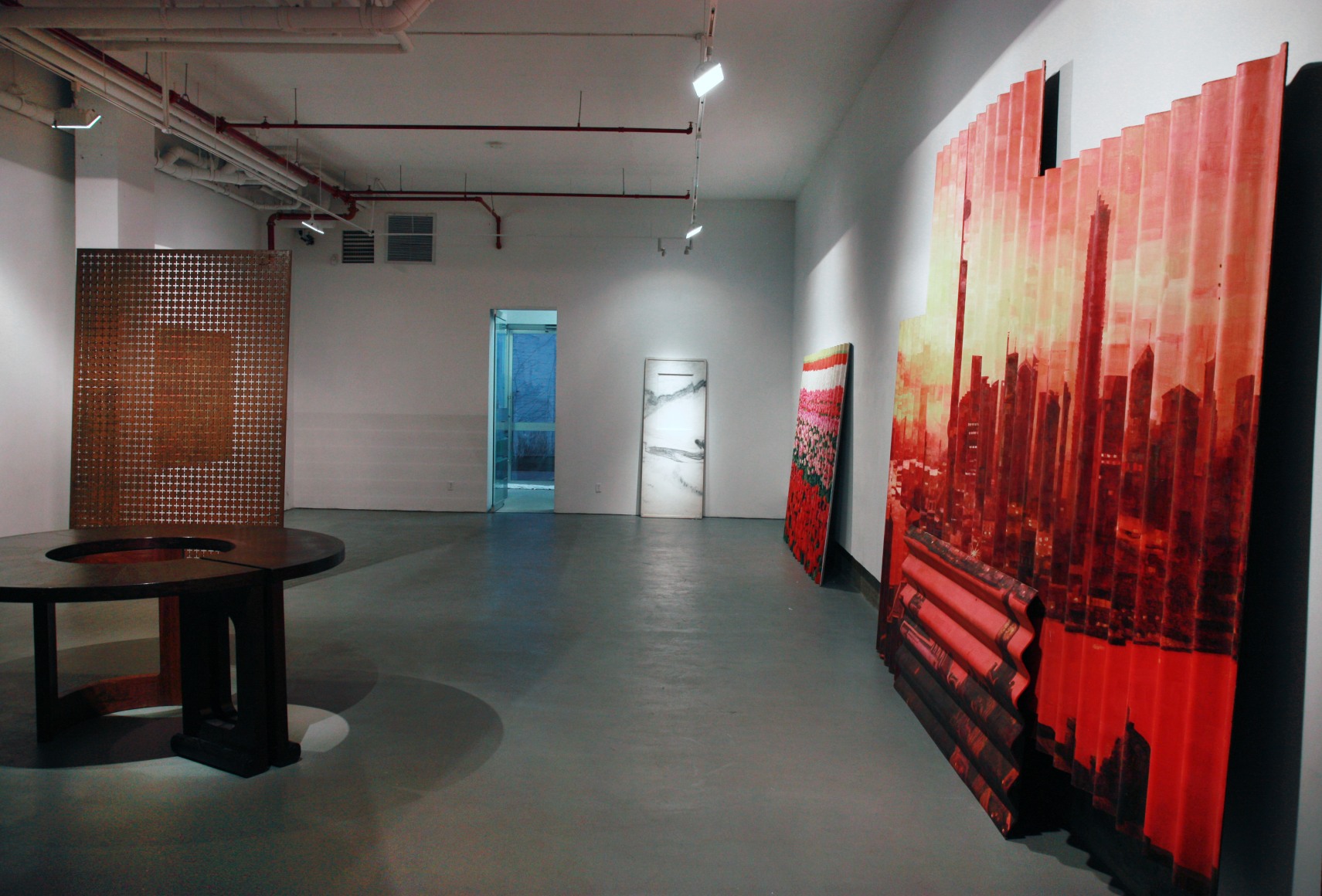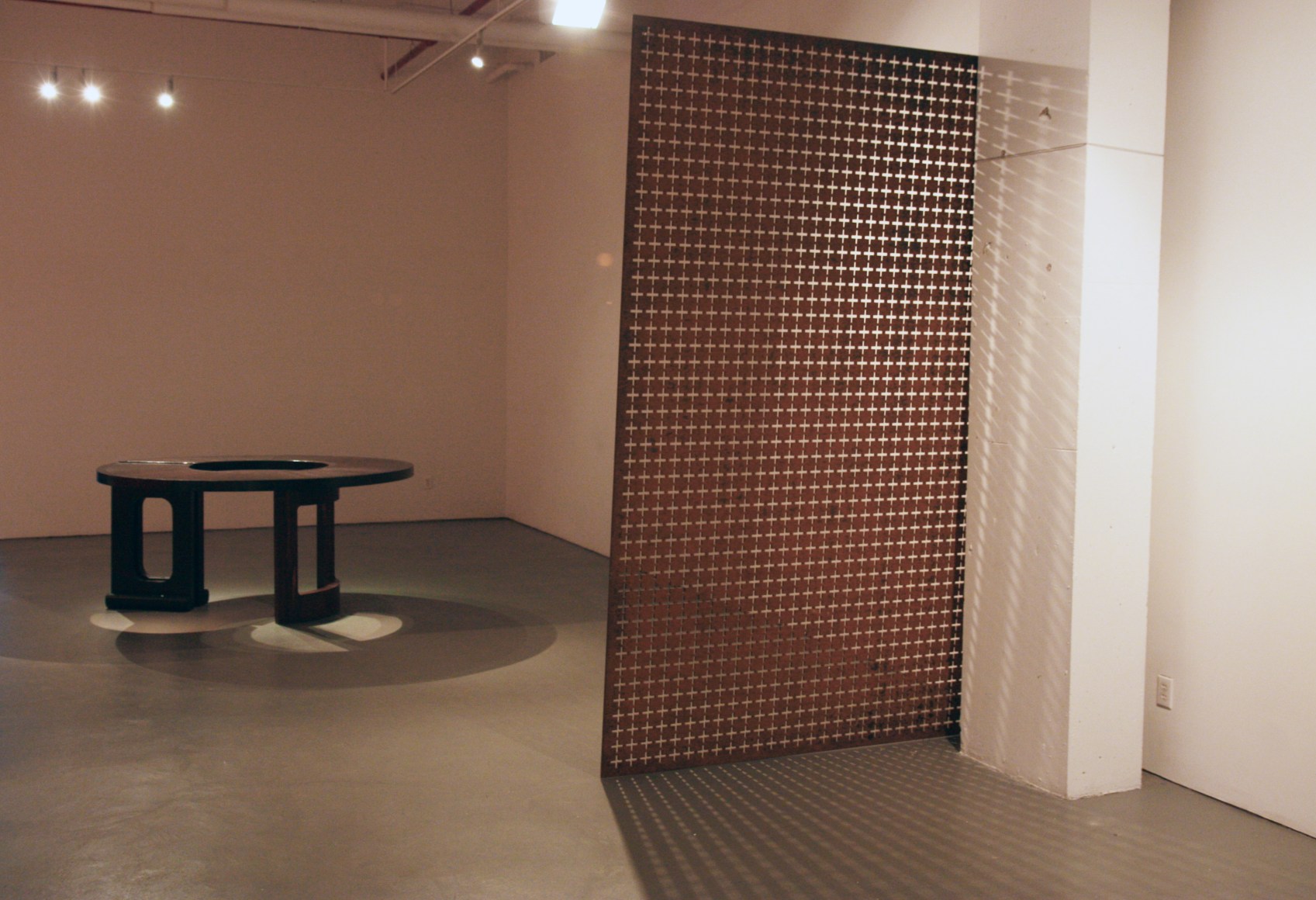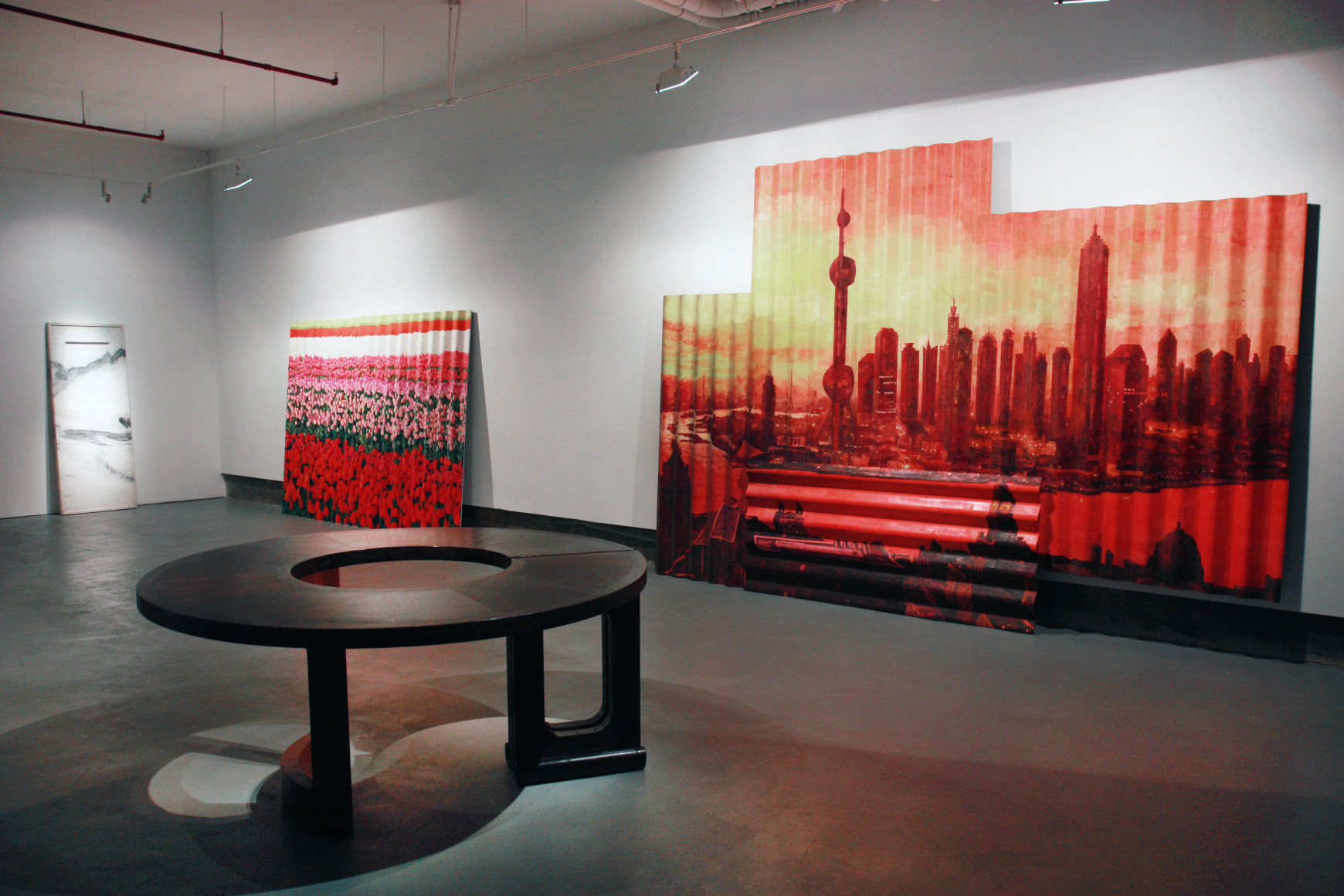Chambers Fine Art is pleased to announce the opening on January 12, 2012 of Persona 3, a cooperative work by Ai Weiwei, Wang Xingwei and Ding Yi. First exhibited in Beijing in 2004, Persona 3 is an audacious experiment in which the three artists agreed temporarily to exchange artistic profiles in a demonstration of their mutual admiration for the Chinese art scholar Hans van Dijk who had died in 2002. Resident in China since 1986, van Dijk was actively involved in the documentation and promotion of contemporary Chinese art at a particularly important time in its development.
As described by Britta Erickson: “Mature artists with widely recognized signature styles, Ai Weiwei, Ding Yi, and Wang Xingwei resolved to turn the iconic nature of each unique body of work on its head. Each artist would produce works of art to be exhibited as the creations of the others. This exercise required serious stretching of both artistic imagination and technical skills, and it was brought off with great aplomb….. Each artist worked in great secrecy, revealing the works to one another only immediately prior to the installation of the exhibition. It was a challenge among the three artists, to fathom the depths of each other’s artistic approach, and then to capture that spirit in concrete form.”
For this exercise, Ai Weiwei produced Appearance of Crosses, a sculptural form in iron that is derived from Ding Yi’s series of paintings Series of Crosses on which he had been working since 1988. One of the very few abstract painters to have emerged with the remarkable growth of contemporary Chinese art in the 1990s, Ding Yi narrowed the focus of his investigations to the repetition of cross forms in endless variations and on a wide variety of supports including ready-made fabrics such as tartans. In deciding to perforate a sheet of iron with rows of crosses, Ai Weiwei produced a sculpture of the type that Ding Yi might have produced if he had ever decided to work in three dimensions.
Known for his ironic use of a naturalistic painting style to comment on a wide variety of social and cultural issues, Wang Xingwei chose to channel Ai Weiwei in his Long Ring Tea-Table, a rosewood painting table reconfigured as a round tea-table. Unlike Ai Weiwei who uses furniture and architectural members surviving from the Ching dynasty and later in his ongoing series of three-dimensional works in wood, Wang Xingwei designed a circular table that does not resemble earlier forms and the Shanghai-based carpenters who executed it used new wood.
For Morning in Shanghai, painted in oil on corrugated board in the style of Wang Xingwei, Ding Yi reverted to the representational style that he had abandoned with the emergence of his signature abstract style in 1988. As in his own works which are frequently characterized by their composite nature, Ding Yi juxtaposes four sections of board in his dramatic Shanghai cityscape in which the celebrated buildings on the Bund are dwarfed by new developments in Pudong.
Enriching the artistic dialog between these three old friends in their hybrid creations will be works by Wang Xingwei and Ding Yi on loan from the Uli Sigg collection as well as by Ai Weiwei in which the artists speak in their own voices.
《魂不附体3》首先在2004年于北京展出。它是艾未未、王兴伟和丁乙的一个大胆的实验。他们三人决定互换创作身份以表示对2002年去世的中国艺术学者戴汉志(Hans van Dijk)共同的敬慕。为此,艾未未创作了《十示样式》,一个以丁乙自1988年开始创作的“十示系列”油画为原型的铁艺雕塑。作为随着中国当代艺术90年代崛起而浮现的少数抽象画家之一,丁乙把他专注的焦点放在了对于十字形状的各种重叠形式的研究上,其中包括像格子呢这样的现成面料。王兴伟以运用自然派绘画风格讽刺性地探讨社会或文化问题著称,在此选用《长环茶桌》来体现艾未未的创作风格。《长环茶桌》是一张由两只桌腿以特殊角度支撑的圆形玫瑰木桌。丁乙以王兴伟的绘画风格用油画颜料在波纹板上画了一幅《上海的早晨》,重新回到随着其签名式抽象画风格在1988年的诞生而被抛弃的具象派画法。
与此同时,三位艺术家独立表达个人艺术语言的作品丰富了这三位老友之间的混合创作和对话,其中包括从乌里•希克的收藏(Uli Sigg collection)租借的王兴伟和丁乙的油画作品,以及艾未未的雕塑作品大理石门。

